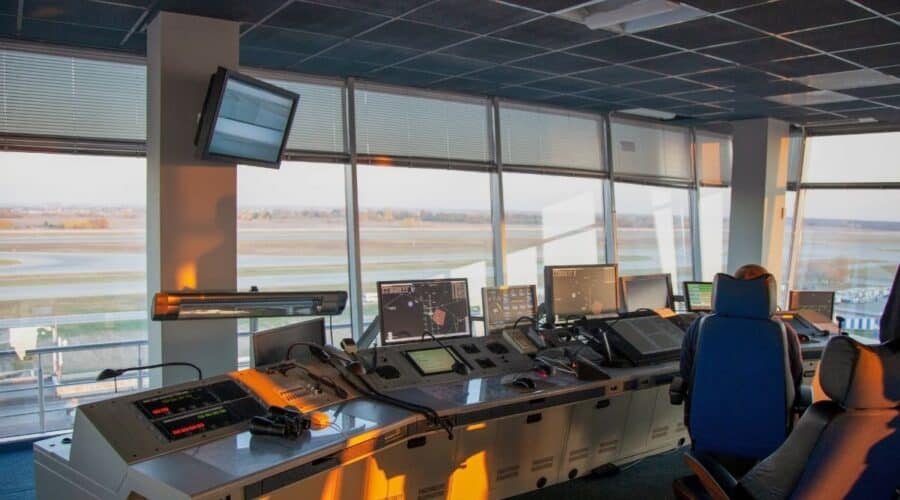UK Air Traffic Control Outage Paralyzes Flights
In the intricate ecosystem of modern aviation, a seemingly routine afternoon at the Swanwick Air Traffic Control Centre transformed into a profound demonstration of technological fragility. The NATS (National Air Traffic Services) technical outage on this seemingly ordinary day revealed the extraordinarily complex and delicate nature of global transportation infrastructure, where a single technological hiccup can instantaneously disrupt thousands of meticulously planned journeys.
The incident was not merely a technical malfunction but a powerful narrative about our increasing dependence on sophisticated technological systems that connect humanity across geographical boundaries. Drawing from advanced aviation technological insights, this moment represents a critical intersection of human engineering, technological complexity, and the perpetual challenge of maintaining seamless global connectivity.
The Precise Moment of Technological Breakdown
At the heart of this disruption lies the Swanwick Air Traffic Control Centre—a technological nerve center responsible for managing the intricate aerial dance of hundreds of aircraft. When the system faltered, it didn’t just interrupt flight schedules; it created a cascading effect of operational complexity that rippled through the entire United Kingdom’s aviation ecosystem.
Passengers found themselves in surreal scenarios—stranded on aircraft, disconnected from terminals, with crew members unable to provide definitive information about departure times. Each delayed flight represented more than a logistical challenge; it was a profound human experience of uncertainty, where carefully planned journeys hung in technological limbo.
NATS’ response epitomized a sophisticated approach to crisis management. Their spokesperson’s statement—”We are in the process of resuming normal operations in the London area”—was more than a mere technical update. It represented a carefully calibrated communication strategy designed to provide reassurance during a moment of collective technological anxiety.
The acknowledgment of inconvenience and commitment to restoration reflected a nuanced understanding of the emotional and practical challenges faced by passengers. This wasn’t just about fixing a technical system; it was about managing human expectations and maintaining trust in an increasingly technology-dependent world.
Broader Contextual Implications
The NATS outage is not an isolated incident but part of a broader narrative of technological vulnerabilities emerging in modern transportation. Examining recent aviation business strategies reveals a consistent pattern of systemic technological challenges:
The CrowdStrike global IT system failure of 2024 demonstrated how a single technological misstep could paralyze entire transportation networks. United Airlines’ extensive flight delays and various airline-specific technological disruptions have collectively highlighted the increasing complexity and potential fragility of our technological infrastructure.
These incidents are not mere technical glitches but profound revelations about the intricate, interconnected nature of modern technological ecosystems. They challenge our assumptions about technological reliability and demand a fundamental reimagining of infrastructure resilience.
Economic and Operational Landscape
The economic implications of such disruptions extend far beyond immediate passenger inconvenience. Each delayed flight represents a complex economic equation—lost productivity, additional operational costs, compensation expenses, and potential long-term reputational damage.
For airlines, airports, and the broader transportation ecosystem, these technological failures are not just operational challenges but strategic inflection points that demand innovative approaches to system design, redundancy, and crisis management.
The future of aviation technologies demands more than incremental improvements. It requires a holistic reimagining of technological infrastructure—systems that are not just efficient but inherently adaptable, with multiple layers of redundancy and rapid recovery mechanisms.
This means developing:
- More robust technological architectures
- Advanced predictive maintenance systems
- Real-time monitoring and rapid intervention capabilities
- Enhanced training for technological crisis management
The Human Element: Beyond Technological Solutions
At the core of these technological challenges lies a fundamentally human story. Each disrupted journey represents individual human experiences—missed connections, altered plans, moments of stress and uncertainty.
The most advanced technological solutions must always be measured against their human impact. Technology should not just be efficient; it must be empathetic, designed with a profound understanding of human needs and experiences.
The NATS air traffic control outage is more than a technical incident. It is a profound meditation on the delicate balance between human ambition, technological innovation, and the perpetual challenge of maintaining seamless global connectivity.





